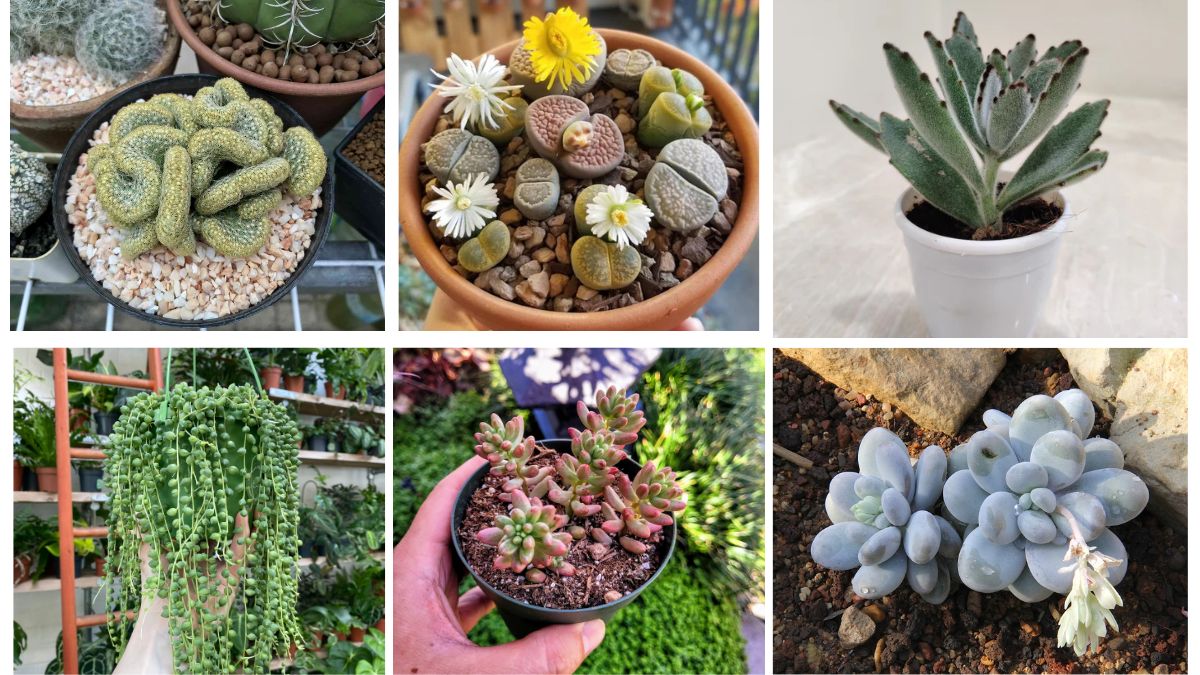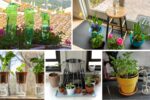Succulents are beloved for their resilience and sculptural beauty, but some varieties go beyond the ordinary with shapes so quirky and fascinating, they’ll instantly turn your garden into a botanical conversation starter. From plants resembling dolphins to those mimicking stones and jellybeans, these unique succulents offer both charm and curiosity. Whether you’re a seasoned collector or a casual gardener, these standout plants are perfect for elevating your indoor or outdoor green space. Let’s explore seven of the most unusual-shaped succulents worth adding to your collection!
1. Dolphin Succulent (Senecio peregrinus)
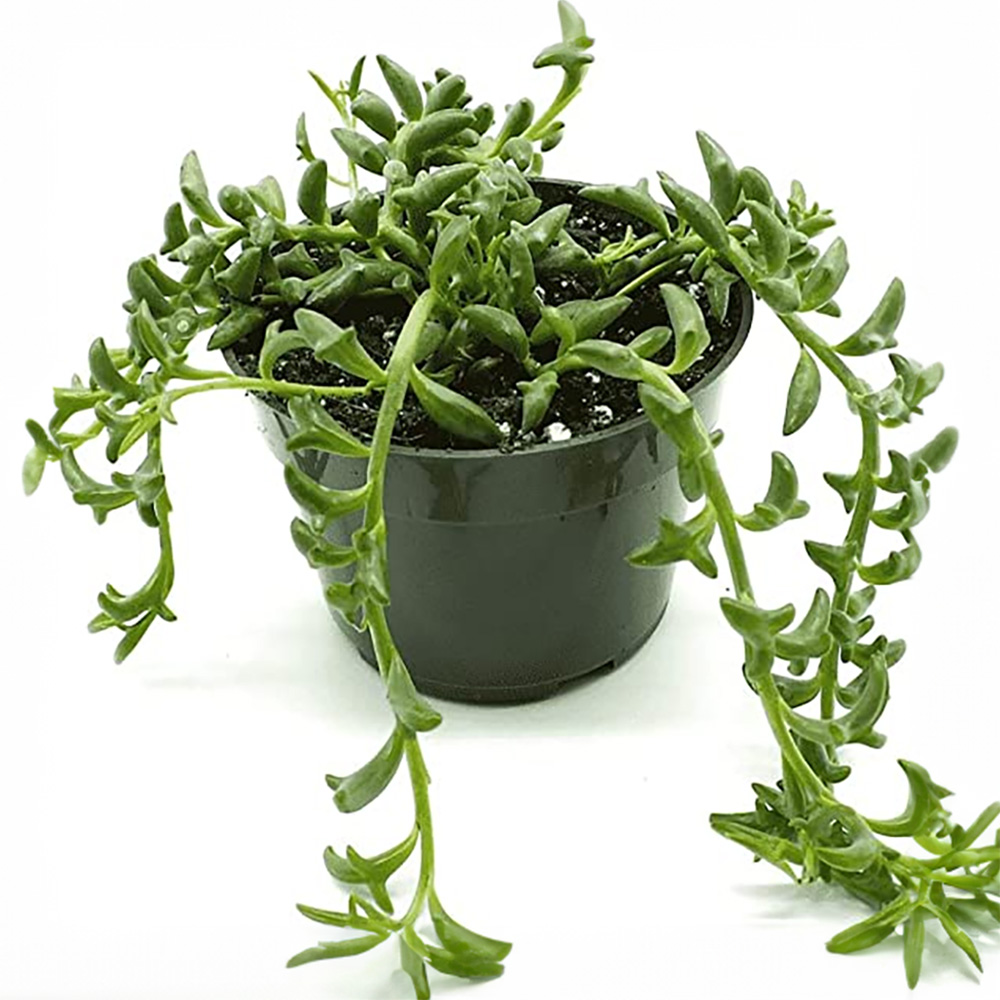
Imagine tiny green dolphins leaping in mid-air — that’s exactly what the Dolphin Succulent looks like! Known for its distinctive, curved leaves shaped like jumping dolphins, this charming plant is a favorite among succulent lovers. It thrives in bright, indirect light and requires minimal watering, making it perfect for beginners. The trailing vines look stunning in hanging baskets or over shelves, and if cared for properly, it even produces small, white, sweetly scented flowers. Its playful form adds a whimsical, aquatic touch to any garden.
2. Living Stones (Lithops)
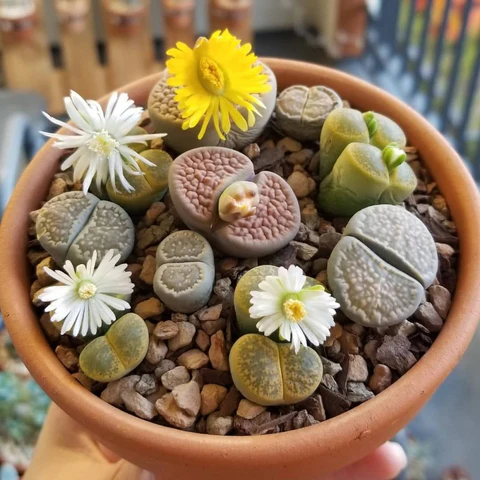
If you’ve ever seen a cluster of small, colorful pebbles only to realize they’re actually plants, you’ve encountered Lithops — also called Living Stones. Native to South Africa, these tiny succulents are masters of disguise, evolved to blend into rocky surroundings and avoid herbivores. Each pair of thick, fleshy leaves forms a slit from which new growth emerges. Lithops require very little water and plenty of sunlight. Their fascinating stone-like appearance makes them excellent conversation pieces and perfect for rock gardens or minimalist displays.
3. Panda Plant (Kalanchoe tomentosa)
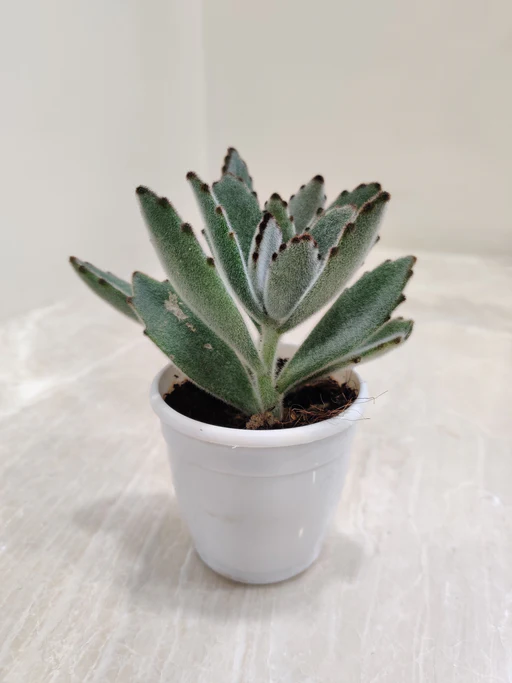
The Panda Plant is instantly recognizable by its fuzzy, silvery-green leaves edged with chocolate-brown spots. Its leaves are thick and velvety to the touch, making it one of the most tactile succulents you can grow. Native to Madagascar, the Panda Plant prefers bright light and well-drained soil. Though it rarely flowers indoors, its distinctive foliage is more than enough to steal the spotlight. This succulent looks particularly attractive in decorative pots or clustered among other textured plants, adding softness and visual interest to your arrangement.
4. Jelly Bean Plant (Sedum rubrotinctum)
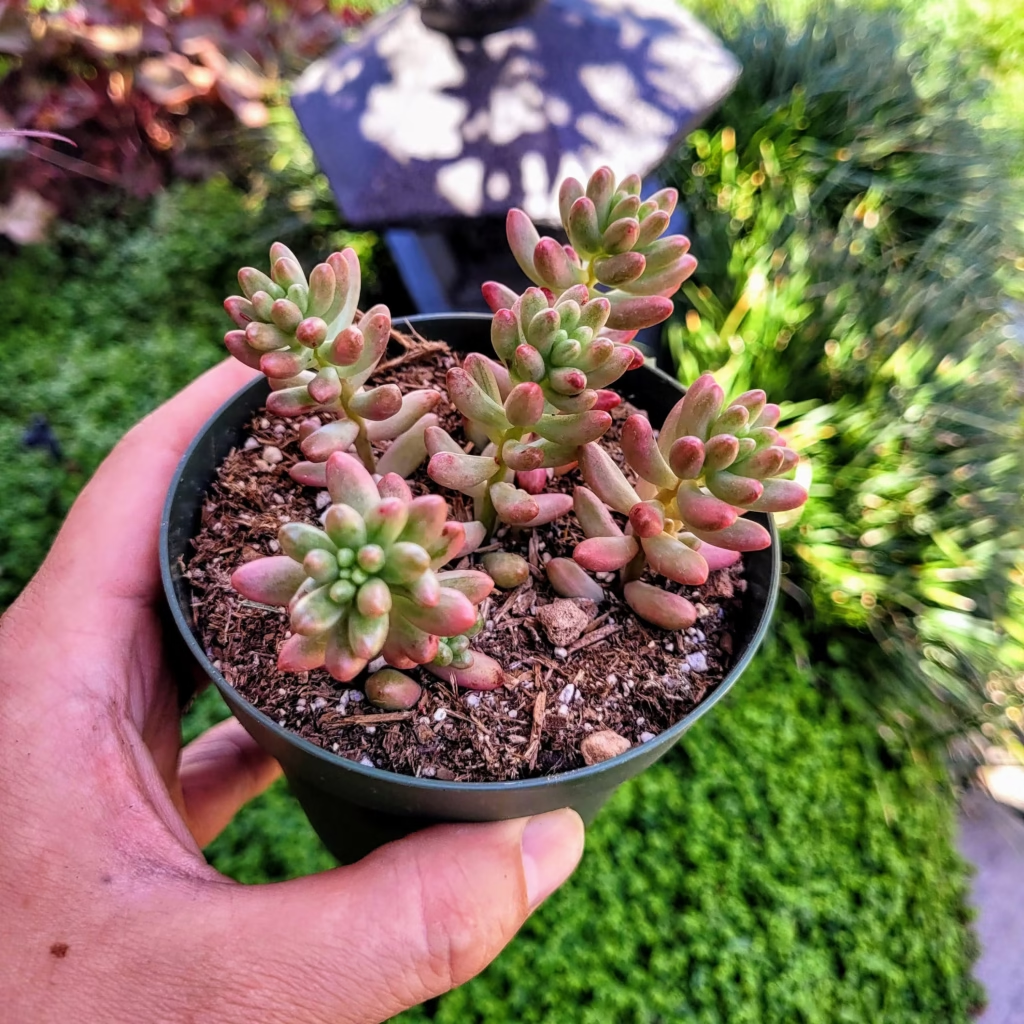
As the name suggests, the Jelly Bean Plant features small, plump leaves that look like glossy, colorful jelly beans. The leaves start out green but turn brilliant shades of red, orange, and yellow when exposed to direct sunlight, creating a lively, multi-colored display. Native to Mexico, this plant thrives in well-draining soil and is both drought-tolerant and easy to propagate. It’s ideal for container gardens, hanging baskets, or adding a playful splash of color to succulent arrangements. Children especially love its quirky, candy-like appearance.
5. String of Pearls (Senecio rowleyanus)

The String of Pearls succulent is a true showstopper with its trailing strands of round, bead-like leaves resembling a string of green pearls. Perfect for hanging planters, this plant creates a stunning waterfall effect as its delicate tendrils cascade downwards. Native to southwest Africa, it prefers bright, indirect light and infrequent watering. It’s also known for producing small, cinnamon-scented white flowers in the right conditions. The String of Pearls is a fantastic choice for those seeking a dramatic, elegant touch to their indoor or patio garden.
6. Brain Cactus (Mammillaria elongata ‘Cristata’)
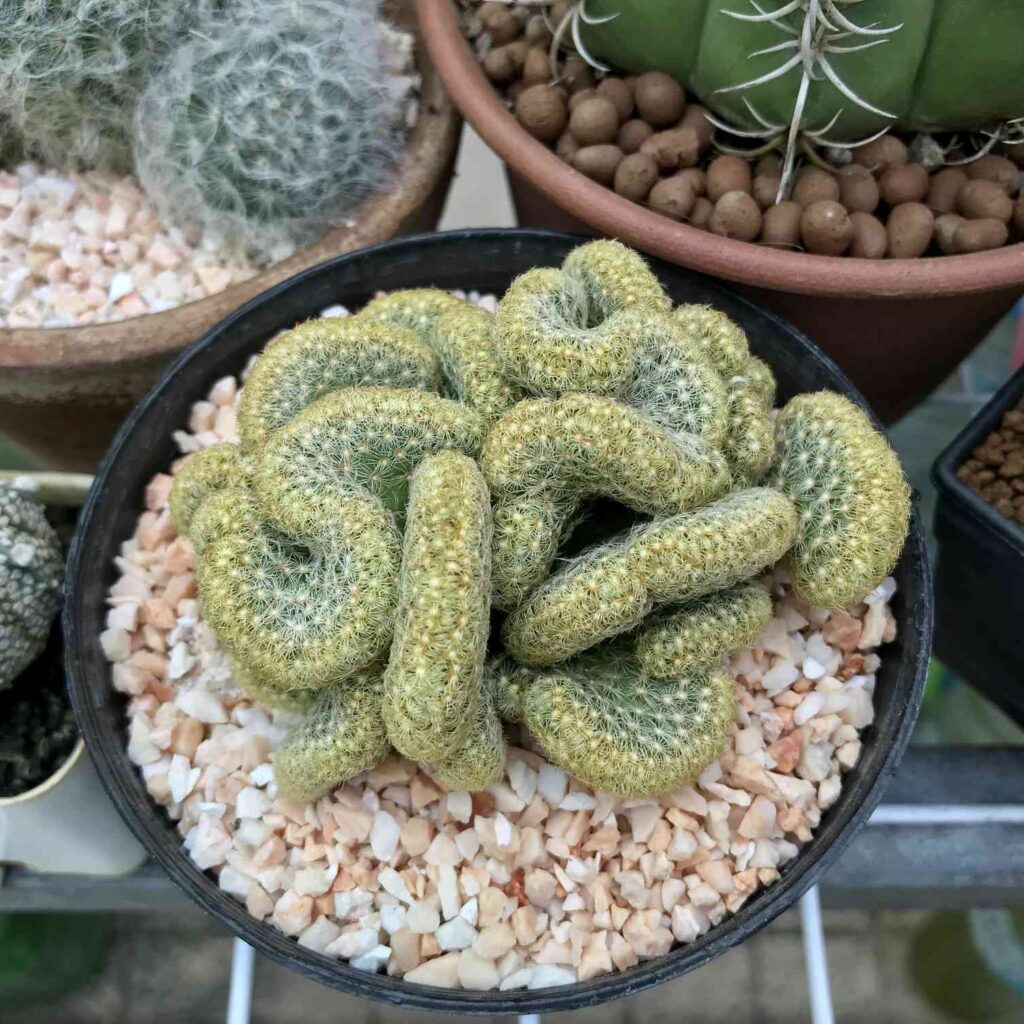
For a plant that truly defies expectations, the Brain Cactus is a must-have. Its wavy, contorted stems grow in tight, twisting formations that remarkably resemble the folds of a human brain. This unique growth habit is a result of a mutation called fasciation, making each specimen one-of-a-kind. Native to Mexico, it thrives in sunny, dry environments and requires minimal water. Typically grown in small containers, it adds an intriguing, otherworldly charm to succulent collections and pairs beautifully with smoother, more geometric plants.
7. Moonstones (Pachyphytum oviferum)
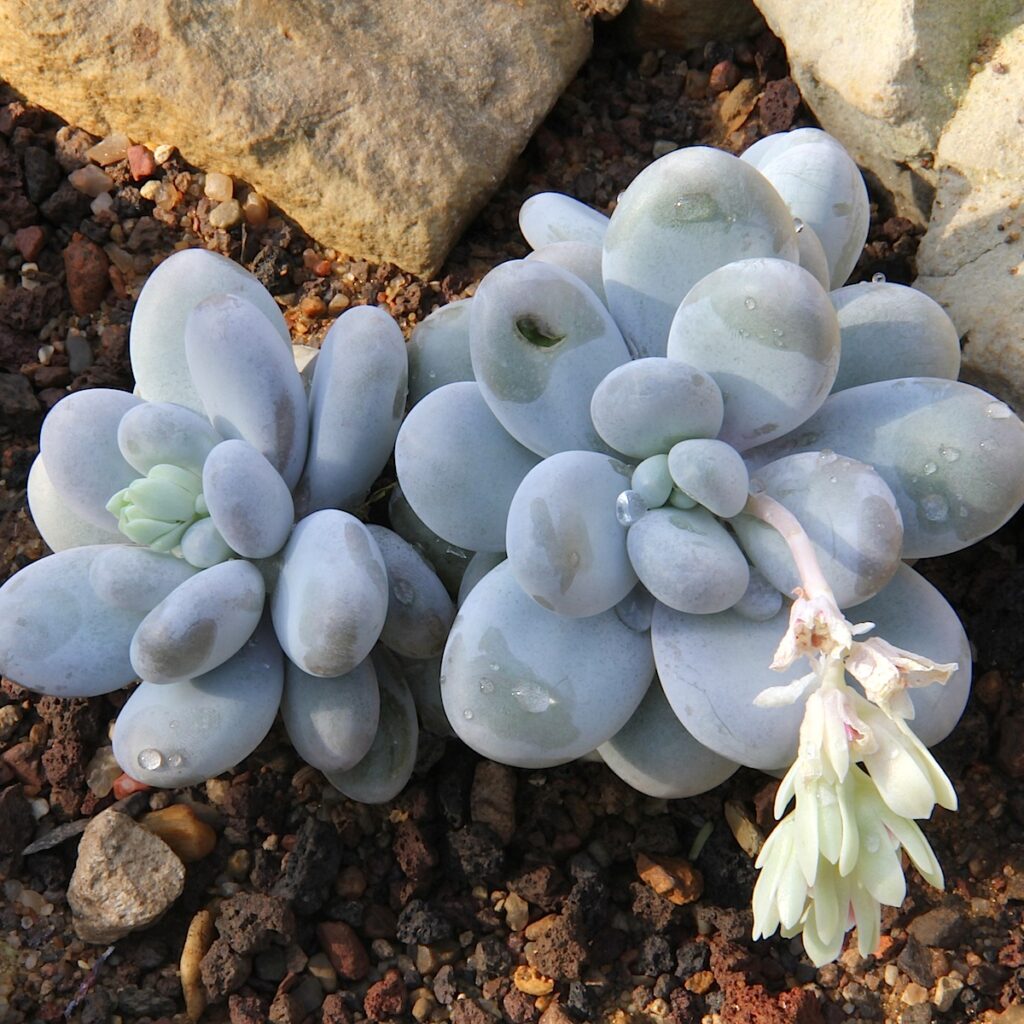
Moonstones is an aptly named succulent featuring plump, rounded leaves that resemble smooth river pebbles or tiny pastel-colored stones. The leaves come in soft shades of blue-gray, pink, and lavender, and have a powdery, frosted appearance that enhances their ethereal charm. Native to Mexico, Moonstones require bright, indirect light and well-draining soil. They’re especially eye-catching when arranged with contrasting succulents or placed in decorative ceramic pots. These delicate-looking plants are surprisingly hardy and can brighten up any indoor or outdoor space with their serene beauty.
Final Thoughts
Adding succulents with unusual shapes to your garden is a brilliant way to infuse character, texture, and charm into your green spaces. From the playful Dolphin Succulent to the alien-like Brain Cactus, these fascinating plants offer visual intrigue and easy care. Whether displayed individually or as part of a larger succulent arrangement, each of these varieties promises to capture attention and spark curiosity. So why not bring a few of these botanical curiosities home and watch your garden’s personality bloom?
